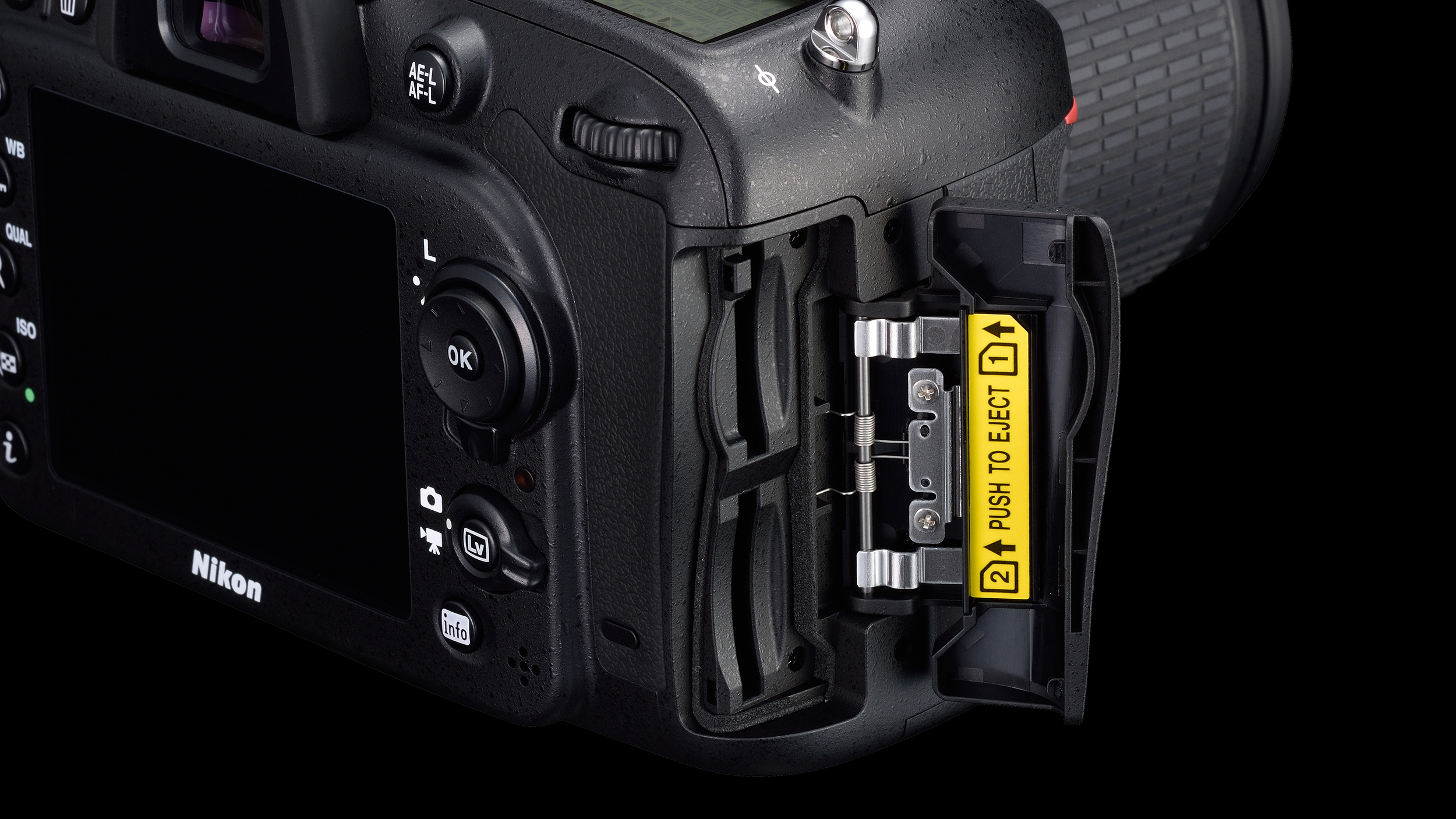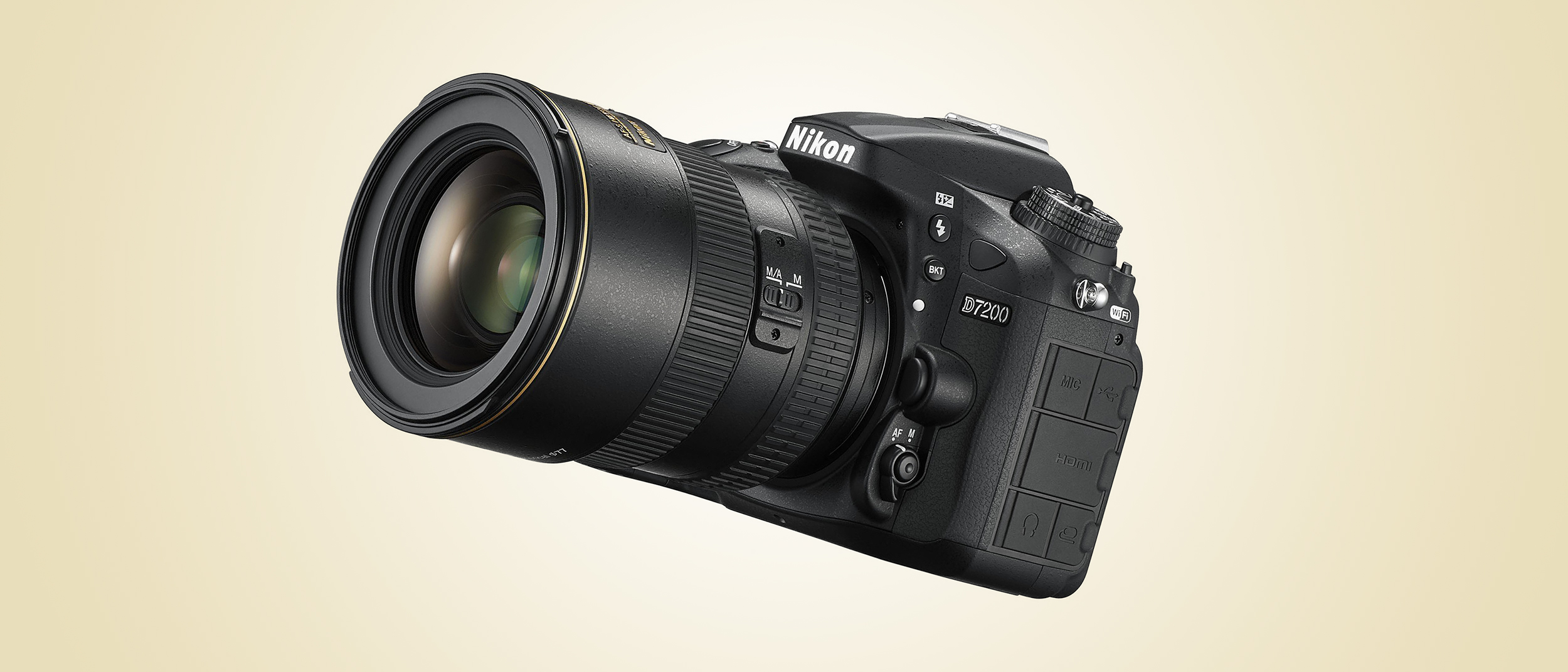TechRadar Verdict
The Nikon D7200 is one of the best enthusiast DSLRs out there, and a great choice if you're looking to upgrade from an entry-level model. It's packed with features and has a cracking sensor, and offers solid performance and an excellent AF system. It may be getting on a bit, but this means it now offers fantastic value for money too.
Pros
- +
Excellent AF system
- +
24.2MP AA-filterless sensor
- +
Sturdy body
Cons
- -
Fixed screen
- -
Screen not touch-sensitive
- -
Movie focusing can be slow
Why you can trust TechRadar
Roughly two years have elapsed between the introduction of the Nikon D7100 and the arrival of its successor, and on the surface the new D7200 seems more like an incremental update than a major overhaul.
The D7200 is built around a sensor with a resolution of 24.2 million pixels, a tiny increase on the D7100's 24.1 million pixels, while the body is pretty much identical, with the same weight and dimensions, and the same viewfinder.
[Update: The D7200 has since been replaced in the Nikon line-up by the D7500. The newer camera sports a slightly reduced pixel-count of 20.9MP, but offers an improved ISO performance, as well as a number of other tweaks and refinements. That's not forgetting a tilt-angle touchscreen and 4K video recording. That does mean that the D7200 can be snapped up for a good price, while it's still one of our favorite enthusiast DSLRs.]
Features
- APS-C CMOS sensor, 24.2MP
- 3.2-inch screen, 1,229,000 dots
- 1080p video capture
In common with its predecessor, the D7200 has no anti-aliasing filter in front of the sensor, an innovation designed to produce sharper images and better rendering of fine detail. Anti-aliasing filters are used to prevent moiré, or interference effects, when photographing fine textures or patterns, but at the time of the D7100's launch Nikon claimed the high pixel density of its sensor would make it unlikely to suffer from any moire patterning, and we've not seen any reports from users suggesting it's a problem.
There are some significant improvements over the D7100, however, the first of which is the upgrading of the camera's internal processor from the Expeed 3 to the newer and more powerful Expeed 4. The frame rate remains the same as the D7100 – 6fps at full resolution, or 7fps when using the 1.3x crop mode – but the faster processor delivers improved buffering capacity, which was one of the biggest let-downs in the previous model.
Sensor: 24.2MP APS-C CMOS
Lens mount: Nikon F-mount
Screen: 3.2-inch screen, 1,200,000 dots
Burst shooting: 6fps
Autofocus: 51-point AF
Video: Full HD 1080p
Connectivity: Wi-Fi and NFC
Battery life: 1,100 shots
Weight: 765g
Nikon claims the D7200 is capable of capturing 100 JPEGs in a burst or 27 raw files, although it should be noted that these figures relate to smaller 12-bit NEF files, and not the 14-bit files favoured by those looking for maximum image quality.
Aside from increasing the frame rate, the 1.3x crop mode has a couple of other useful applications. It extends the reach of your lenses if you need to get closer to a subject, such as when shooting sports or wildlife, and with 24 million pixels of resolution there's plenty of scope for cropping in on subjects while still being able to produce large, high-quality prints. Secondly, it means that the 51 autofocus points cover the whole of the frame, rather than being grouped around the centre.
Another improvement is in the camera's sensitivity range. The D7200 has a native range of ISO100-25,600, up from the D7100's native top end of ISO6400. There are also Hi BW1 and Hi BW2 expansion settings, which take you up to a whopping ISO 102400 (equivalent); however, these two options are only available in JPEG mode, and produce monochrome images.
The D7200 comes with Picture Control 2.0, which we've already seen in other Nikon cameras such as the D750 and the D5500. That means there are seven different Picture Controls, including the new Flat mode, which produces images with reduced contrast and maximum dynamic range – videographers are more likely to use this than photographers, as it makes grading and enhancing footage easier.

Speaking of video, the D7200 shoots full HD 1080p footage at 30/25p, and you can also shoot at 60p/50p when using the 1.3x crop mode. The camera is also compatible with a new Nikon ME-W1 wireless mic, which it is claimed can capture sound up to 50 metres away. Video footage can be saved to one of the D7200's dual SD card slots, or you can transfer it via HDMI to an external recorder.

The D7200 introduces both Wi-Fi and NFC (Near Field Communication) connectivity within the body itself, both of which are becoming more prevalent on D-SLRs. While it's not the first Nikon to feature Wi-Fi (the D5500 and D750 also have it), it is the first to include NFC, which should make connecting to an Android phone or device even quicker (though more on this later).
Another thing that stays the same is the 3.2-inch, 1229k-dot LCD screen, which is fixed and not touch-sensitive, and they eye-level pentaprism optical viewfinder, which offers 100% coverage.
As it stands, the D7200 competes most closely with the Canon EOS 80D. Higher still in the Canon APS-C range is the EOS 7D Mark II, while those looking to stick with Nikon have the stunning D500.
Phil Hall is an experienced writer and editor having worked on some of the largest photography magazines in the UK, and now edit the photography channel of TechRadar, the UK's biggest tech website and one of the largest in the world. He has also worked on numerous commercial projects, including working with manufacturers like Nikon and Fujifilm on bespoke printed and online camera guides, as well as writing technique blogs and copy for the John Lewis Technology guide.

